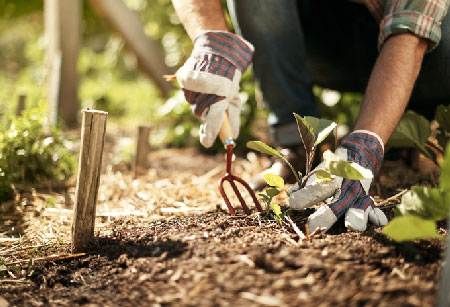LAWN MOWER SAFETY
Each year, more than 74,000 small children, adolescents and adults are injured by rotary, hand and riding power mowers due to improper handling. Kinetic energy (motion) imparted by a standard rotary blade is comparable to the energy generated by dropping a 21-pound weight from a height of 100 feet or is equal to three times the muzzle energy of a .357 Magnum pistol. Blade speed can eject a piece of wire or an object at speeds up to 100 miles per hour. Here are essential lawn mower safety facts:
Injury Profile
- Adults 25-64 years of age
- Children under age 5
- 22% involve wrist, hand or finger
- 14% involve foot, ankle or toes
- 25% of all hand and foot injuries result in amputation
- Deaths occurred in children under 6 years of age
Common Injury Patterns
- Direct contact with rotating or jammed blade
- Serious avulsion (tearing/ separating) injuries to soft tissues and bones
- Gross contamination from contact with grass/ soil harboring pathogens
- Injuries requiring staged surgeries to cleanse wounds and provide soft tissue coverage
Common Weather Conditions for Injury
- Wet grass
- Damp ground
Other Causes of Injury
- Passengers (adult/child) on riding mowers or in cart towed behind mower
- Mower being pulled backward
- Sloping lawn mowed by power mower up and down slope, instead of across
- Sloping lawn mowed by riding mower across slope, instead of up and down
- Wearing sandals or open-toed shoes
- Operator attempts to unclog blades with hand or foot
REMEMBER THE FOLLOWING TIPS While practicing lawn mower safety
- Read your mower’s instruction manual before use
- DO NOT REMOVE safety devices or guards on switches
- NEVER insert hands or feet into the mower to remove any obstruction
- ALWAYS use a stick or broom handle to remove any obstruction
- NEVER cut grass when it is wet or when the ground is damp
- NEVER allow a child to operate the mower at any time or be in the area to be mowed
- NEVER allow passengers, other than the operator, on riding mowers
- Keep you mower in good working condition with sharp blades
- DO NOT DRINK before or while using your lawnmower
- Wear protective boots, goggles, gloves and long pants
- Do not operate the lawnmower while barefoot
- Be cautious when mowing hills or slopes
SAFETY IN THE GARDEN
The proper precautions can prevent hand-related injuries when digging or planting in the garden this spring. According to the Consumer Product Safety Commission, emergency rooms treat more than 400,000 outdoor garden tool-related accidents each year. With proper safety techniques, you can stay away from the hospital avoid becoming a statistic.
Wear gloves when working outside
Wearing proper gloves will not only reduce blistering, but will also protect your skin from fertilizers and pesticides as well as bacteria and fungus, which live in the soil. When exposed to soil, even the smallest cut or lesion runs the risk of developing into a major hand infection. Leather gloves offer protection from thorny objects; snake, rodent and insect bites; poison ivy; and other skin irritants in the garden. Gloves also prevent sunburn and fingernail damage.
Avoid prolonged repetitive motions
Unless you are preconditioned or accustomed to the activity, repetitive motions such as digging, raking, trimming hedges, pruning bushes, or planting bulbs, may cause skin, tendon or nerve irritation. Make sure your gardening activities are varied and tasks are rotated every 15 minutes with a brief rest in-between so that the same muscles are not used over and over again.
Watch for buried objects
Sharp objects and debris buried in the soil may cause tendon lacerations or punctures. Use a hand shovel or rake rather than your hand, itself, for digging. Use the right tool for the right job Avoid accidents by using tools for their intended purposes. When purchasing pruners, loppers, or shears, look for brands featuring a safety lock, and keep sharp tools away from children at all times.
Use proper ergonomic posture
“Posture” refers not only to your whole body position, but also to such things as the angle of your wrist while using hand tools. Grip strength is at its maximum when the wrist is in a relaxed or neutral position. Testing has shown that people lose up to 25% of their grip strength when their wrist is bent.
Avoid products with form-fitting handles
Many tools are made with finger grips molded into the handle to provide better slip resistance. These “form-fitting” grooves, however, only fit one size of hand perfectly. People with larger hands will find their fingers overlap the ridges, causing pain, soreness and calluses. Those with smaller hands will have to spread their fingers to match the grooves. Strength testing has shown that this spreading of the fingers significantly reduces grip strength, requiring more pressure to maintain control of the tool.
© ASSH 2009
